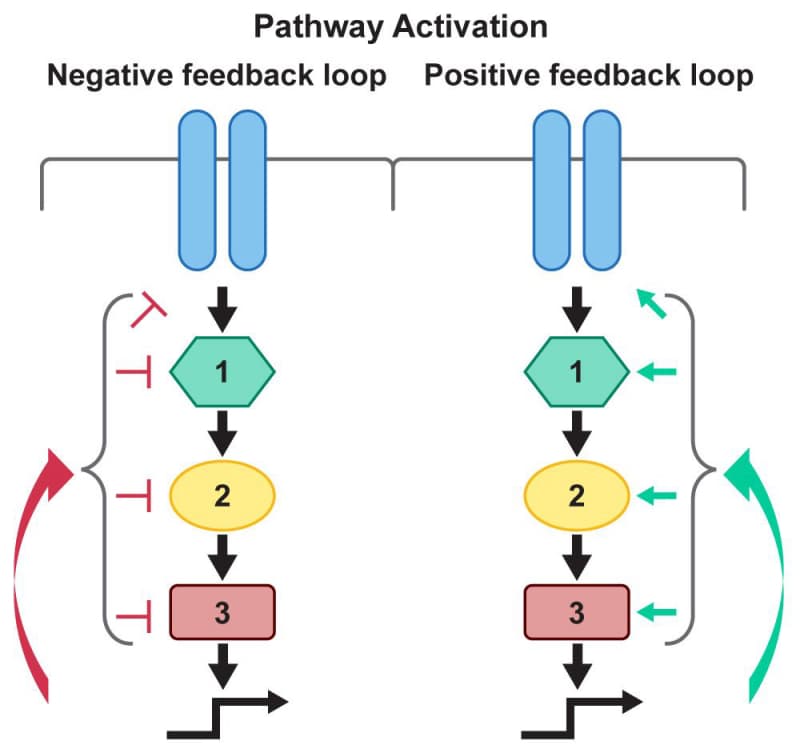After the cell responds to a signal, feedback mechanisms can modulate the signaling process. Organisms use feedback mechanisms to maintain their internal environments and respond to environmental changes. Positive feedback results in an amplification or increase in the response. Negative feedback results in the reduction of the response. Often the feedback is produced by a product of the signaling cascade. Therefore, the feedback is integrated into the signaling pathway.

Figure 4.01: Representation of a signal transduction pathway with positive and negative feedback loops. The final product represented by the black arrow at the bottom can either activate or inhibit other proteins or receptors in the pathway.
Positive Feedback
Positive feedback pushes the response to be stronger, changing the environment more rapidly. When the stimulus is further activated, amplification occurs, which initiates an additional response and produces a larger change. This may occur in order to ensure a specific process is completed or a threshold is reached. Once this point is achieved, the feedback loop is ended or reversed through other pathways.
Negative Feedback
Negative feedback helps maintain homeostasis by slowing or stopping the response to a signal. This can help return the system back to the initial conditions and prevent excessive response to a signal. Negative signaling is also used to turn off and end the signaling pathway. Negative feedback can occur through different mechanisms such as inhibiting the activation of upstream components or degrading pathway components.
Both types of feedback are essential for cells as they regulate important biological processes. For example, when the body is cold, a negative feedback loop helps to increase core temperatures; nerve cells sensing suboptimal temperatures send signals to the brain, which in turn, causes us to shiver. These signals continue to trigger until the body has returned to homeostasis. An example of a positive feedback loop is the process of blood clotting; when an injury is bleeding, platelets begin to coagulate at the site and send out signals to attract more platelets. As more platelets accumulate, more signals are sent out, and more platelets are alerted to further expedite the clotting process.













